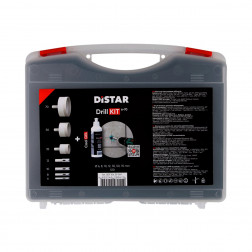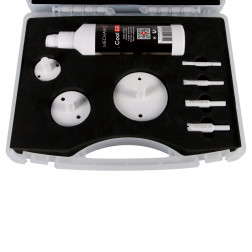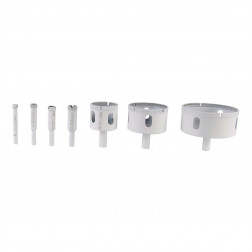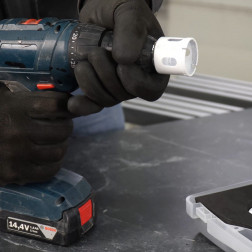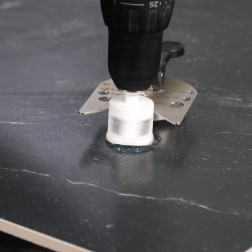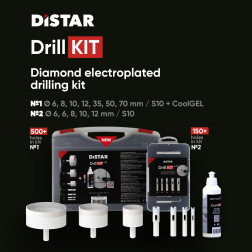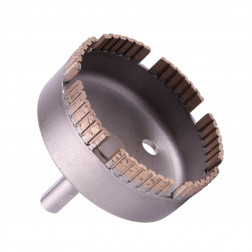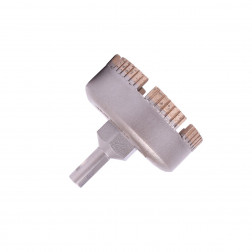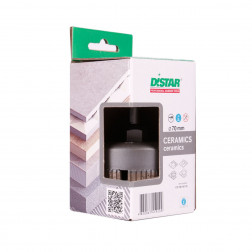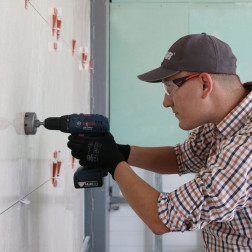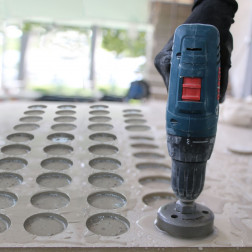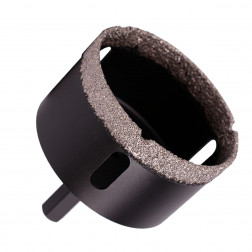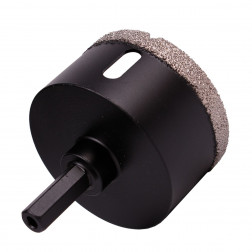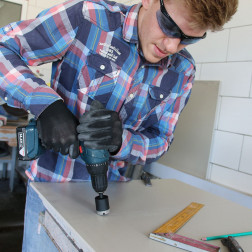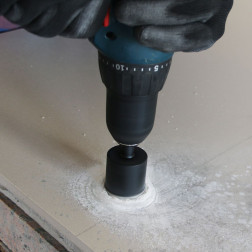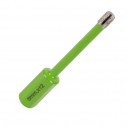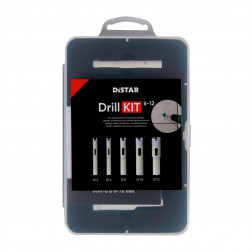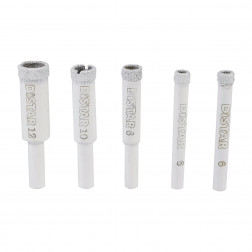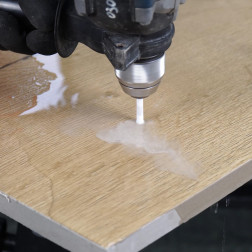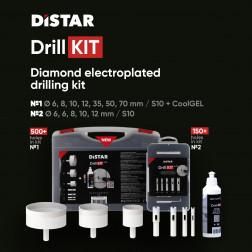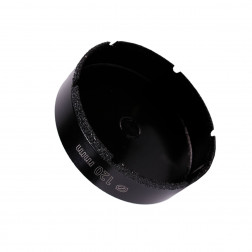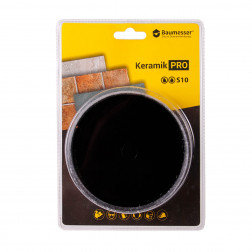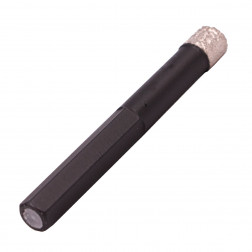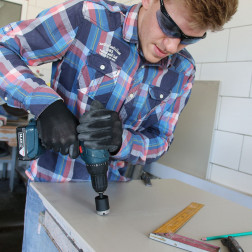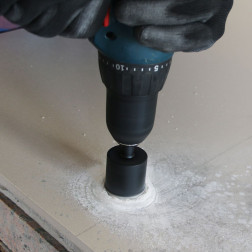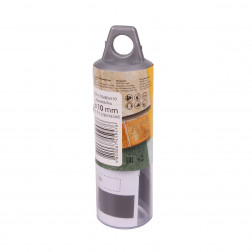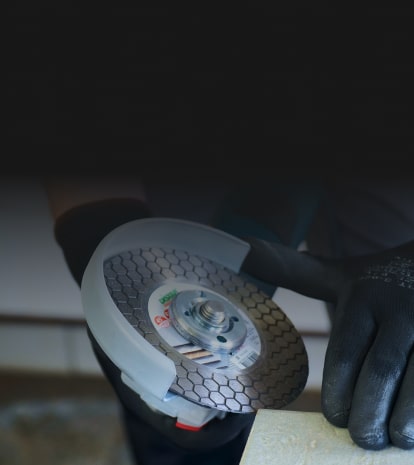Core drills for Drill
7 modelsDiamond drill bits
When renovating any premises, the handyman has to deal with drilling small holes (6-12mm) as well as larger ones (70-120mm) for cabling, pipes, sockets and other tasks. These days, different kinds of tiles - either ceramic or porcelain stoneware - are increasingly being used for wall cladding.
Ceramic is very easy to drill as it is a soft material, but porcelain stoneware is much harder, as it can be even harder than natural granite.
An impact drill is a very common tool for this kind of work, because it is compact, has a wide range of construction tasks and is relatively inexpensive. Diamond drill bits are used as consumables for tile drilling.
Any electric drill is suitable for drilling into tiles or porcelain stoneware, as they are all speed-controlled and have enough power to drill into porcelain stoneware of all strengths. The revolutions are selected according to the drill bit diameter and every diamond tool manufacturer recommends lowering the revolutions as the drill bit diameter increases.
For example, 6-10 mm holes can be drilled at or near maximum speed, but 70-120 mm at the lowest speed. Drilling must always be carried out without impact and with coolant, as the diamond drill bit gets very hot and thus heats up the material. Failure to cool down properly can result in damage to the drill bit or the material being machined. The drilling process itself can be roughly divided into 2 stages:
- Stop drilling. It is very important to pay proper attention to the drill bit's initial contact with the material, as the drill bit can slip on the surface as it rotates and ruin the tile. Very often when drilling, special surface casing strings are used to centre the drill bit and prevent it from slipping on the tiles. TM Mechanic has a special "EasyFix 70" template in its arsenal. It has a special suction cup that enables it to be fixed on both horizontal and vertical surfaces to drill with 6-70 mm diameter drills. And even if you have a surface casing string, it is best to hold the drill bit at a slight angle when drilling, rather than perpendicular to the surface.
- Hole drilling. Once we have created a groove 2-3 mm deep, we can remove the template and continue drilling. For more effective cooling, it is recommended to change the angle of the drill bit (rocking motion) slightly during the process, as this helps the coolant to reach the cutting area better and cools more effectively, especially if we supply cooling from outside the bore bit. In addition to better cooling, the change in tilt angle has a positive effect on diamond sharpening, thereby increasing drilling speed. However, when you see that the hole is almost drilled, it is best to drill at a right angle and with little effort so that the drill bit does not severely damage the back of the tile when it comes out.
Water is most often used as a coolant for drilling, but the disadvantages of supplying water for drilling are increased contamination and inconvenience when supplying to a vertical surface (if tiles have already been laid).
To minimise dirt and make drilling in an upright position comfortable, TM Baumesser has developed a special cooling gel for drilling - "CoolGel". It holds perfectly on any surface, effectively cools the diamond drill bit layer and localises dirt when drilling.
Distar offers diamond drill bits in diameters from 6 mm to 120 mm. They come in two types, each with its own advantages and can therefore be used depending on your tasks and volumes:
- Sintered drill bits. The main advantage of this type of drills is their long operational life and relatively high edge fineness. A sintered diamond drill bit has several layers of diamonds and during drilling some of the diamonds are worn out and new ones protrude, ensuring high durability. They have a small amount of diamond on their surface, so the drilling speed is not very high.
- Vacuum drill bits. They have only one layer of diamonds which, when worn down, make the tool no longer cut and therefore have a considerably shorter operational life than sintered tools. The main advantage is the high machining speed of even the hardest materials, as a large number of diamonds are concentrated on the surface.
On our website you can find diamond tools in the diameters you need and for all your applications. In addition to the bore bits themselves, you'll find various templates and fixtures that make a number of construction tasks a lot easier.
